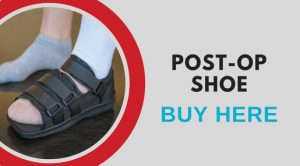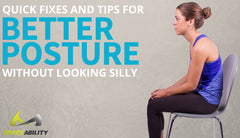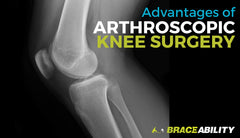Why I Decided to Have Mallet Toe Surgery
Hammer, Claw and Mallet Toe Deformity
Hammer, claw and mallet toe all refer to foot deformities caused by imbalances in the muscles, tendons and ligaments. While each of these affects slightly different areas of the foot, their causal factors and the problems they create, such as bunions, blisters, calluses and pain, are quite similar, as are the treatment options for straightening and improving the alignment of a toe that is bent.

Heidi happened to suffer from mallet toe that affected the middle three toes between her big toe and pinky toe. She explains that tightness in a tendon in her foot pulled the toes up, and then the shoes she was wearing forced the toes to bend down at the joints closest to the tip of the toe. Her curved mallet toes were prone to some major callusing, and the resulting pressure on the toes wreaked havoc on her toenails and toenail beds. “I’ve actually lost or severely damaged nails because the nailbeds have been so destroyed by the impact,” Heidi, an avid runner explains. “At some point, I may need to remove them altogether.” In fact, Heidi decided to pursue mallet toe treatment not because of any desire to change the appearance of her feet, but rather because she was ready to get rid of the pain it caused with running, the weak nails and the irritating task of using a pumice stone on her toes.
What Causes Mallet Toe?
Mallet toe can be caused by a number of things. One of the most common mallet toe causes is frequently wearing ill-fitting shoes—specifically high heels or ones with a tight, pointed-toe that crowds the toes. In Heidi’s case, the tight, pointed shoes with high heels she wore to “look the part” for her first corporate job roughly 10 years ago were to blame. Heidi is a taller girl with proportionate feet, and she admits she wanted to fit into a smaller size. “The shoes I was wearing forced the front of my toes to bend down,” she explains. Around the same time, she also started running. “So between running and high-heel wearing, that’s when I started to notice it.” Since that time, her shoe-wearing habits have changed. “Now, comfort wins,” she says with a grin. But unfortunately, the damage was already done.Other Reasons for Your Bent Toes
Foot structure abnormalities, such as imbalanced toe muscles, can leave you prone to mallet/hammer toe, as can some diseases, like arthritis or diabetes. A jammed or broken toe can also develop into a crooked mallet toe over time. Other risk factors for mallet toe, claw toe or hammer toe include:- Age (the older you are, the more likely you are to develop this)
- Female sex
- Toe length: If your second toe is longer than your big toe, your risk is higher
- A family history of mallet toe, hammertoes, etc.
How to Fix Curled Toes
How you fix mallet toe will depend on the severity of your condition.
Fix Mallet Toe Without Surgery
For milder cases, changing to low-heeled, roomier shoes and possibly adding some shoe inserts, arch supports or toe tubes that hold the foot in a more comfortable position and offer support for your bent toes may be sufficient for mallet toe correction.
You might also try using a mallet toe splint or brace if your toe(s) still has some flexibility. Buddy taping can also act as a mallet toe straightener in milder cases.
There are also some mallet toe exercises you can do to strengthen and stretch the toe muscles, which can help in addition to wearing more appropriate mallet toe footwear. Some examples include crumpling a towel or picking up marbles using your toes.


But if your condition has been going on for quite some time and your toes are no longer flexible, non-surgical options for mallet toe repair are likely a waste of time and money.
Correct Mallet Toe with Surgery
For more severe cases, surgical repair of your mallet toe may be needed to release the tendons so the toes can lie flat. In some cases ,this also means some bone may need to be removed or your toe may need to be fused. Unfortunately, that was the case for Heidi. “When I went to the podiatrist, he said it’s so bad, non-surgical methods aren’t going to help at this point.” Prior to surgery, Heidi underwent a physical exam to ensure she was healthy enough to go under the knife. She also received instructions about what to do leading up to surgery (fasting, no nail polish, no lotion, etc.) and what the day would look like. “It was pretty simple on the front end,” she says.
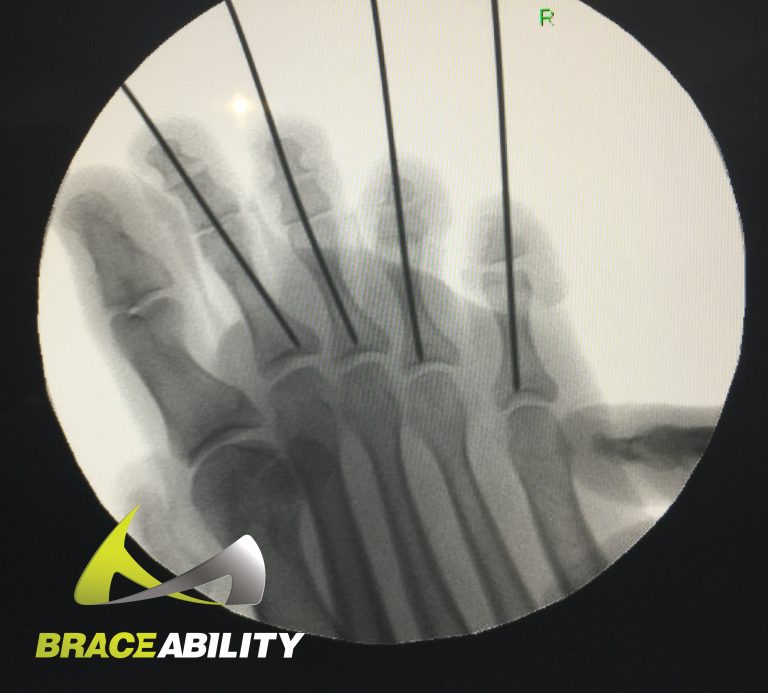 Heidi went into surgery with two options. Her surgeon would either 1.) cut the tendon under the mallet toes and hope they would release and flatten, or 2.) cut the tendon beneath the toes and use surgical hardware to fuse and straighten the toes.
Heidi went into surgery with two options. Her surgeon would either 1.) cut the tendon under the mallet toes and hope they would release and flatten, or 2.) cut the tendon beneath the toes and use surgical hardware to fuse and straighten the toes.
Her toes were so “wound” that the surgeon had to go with option No. 2, inserting lengthy pins to shore up the repaired toes. For Heidi, that also meant that her podiatrist opted to fix one mallet foot at a time, with an 11-week period (eight weeks of recovery, three buffer weeks) between the procedures.
Since no weight bearing is allowed after surgery for quite some time if pins are used, repairing the mallet toes of both feet would have left Heidi completely immobile and wheelchair bound.
Heidi went into the clinic around 1:00 p.m. and left the hospital around 5:00 p.m., with the surgery itself lasting around 2.5 to 3 hours.
Mallet Toe Surgery Recovery
When Heidi returned from the hospital, she was instructed to alternate between taking pain medication and aspirin to limit the risk of blood clots every three hours and to stay on the couch with the foot elevated at all times.
The hospital provided her with a scooter (that her sweet husband outfitted with a bottle holder and bell) that she was allowed to scoot around on for 10 minutes every hour.
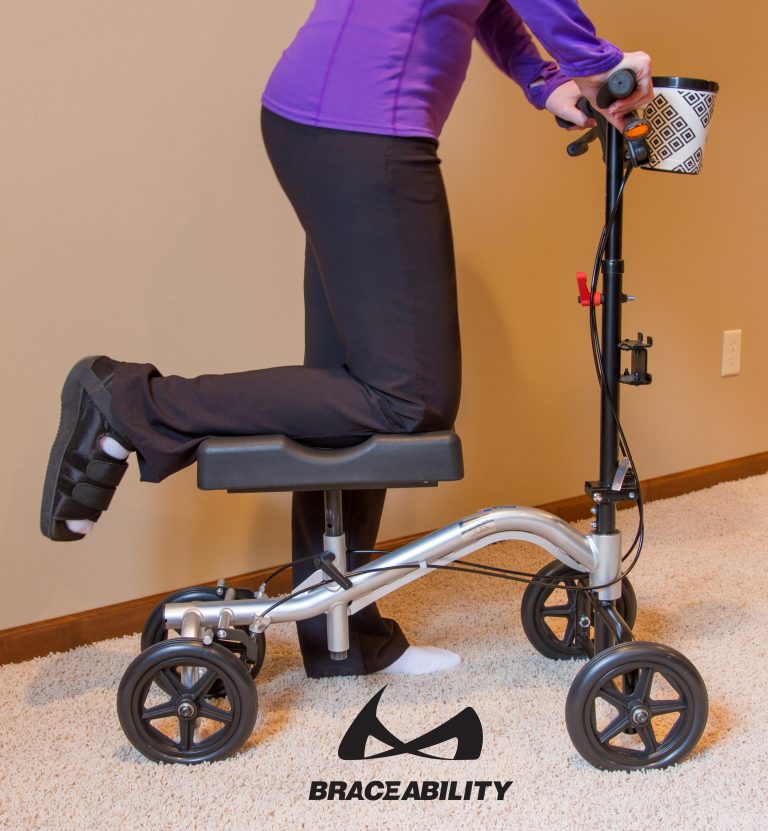
She iced the foot as needed to keep swelling down and said she spent much of the initial time home from the hospital sleeping. “The first week was the hardest and the scariest,” Heidi explains. “You have to be very careful with your feet. It’s easy to run into things, even on a scooter.” She had an instance where she bumped her toe that made her really nervous she had derailed the mallet toe fix. But the experience taught her that the pins make your toes very sturdy. “It was more scary for me than it really was,” she adds.
Some milestones in the mallet toe recovery process include: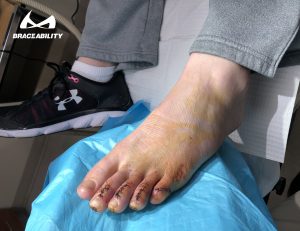
- Week 2/3: Stitches come out
- Week 4: Can start putting some weight on the foot.
- Week 6: Pins could be pulled from all three toes
- Week 6 + 3 days: Could shower for the first time, with Heidi saying, “that was HUGE!”
- Week 7: Drove for the first time since surgery.
- Week 8: Last post-op appointment, at which podiatrist cleaned up scarring. Heidi explained this as a painful process where her podiatrist picked off dried blood and which Heidi likened to peeling off scabs.
Of note, when Heidi’s second foot was repaired, the surgeon opted to use screws to straighten her curled toes. A major perk of going down that path was that she only had to wait until the two-week mark to get the foot wet because there was no open incision through which pins protruded. Also, she does not have to get the screws removed—a step that was uncomfortable and (understandably) gave Heidi a fair amount of anxiety.
Walking after Mallet Toe Surgery
Physical therapy is not required after surgery to repair mallet or hammer toe. Heidi said just moving around is helping her to get back to normal. She was instructed to start at 30-minute intervals and build up from there.
Any time she was on the move, Heidi was supposed to don a wide, flat-footed post-op shoe that offered a layer of protection around the foot, in addition to the bandaging her podiatrist applied.
At the four-week mark, she transitioned to a similar brace with a wedge for offloading the front of the foot. Heidi was thankful to report she did not have to wear either at night while sleeping. Heidi also recommends doing an exercise where you drag your foot back and pull the heel up to practice the rolling-foot motion needed for walking. You can start doing this as soon as your podiatrist gives you the green light to start walking and putting pressure on the foot. Doing this exercise made a world of difference in terms of bringing down inflammation.

When you’re considered “fully recovered” varies from person to person. Heidi explained that the eight-week mark is when the doctor considers “good to go.” But that certainly doesn’t mean that at that point you’ll be back to normal.
I talked with Heidi 10 weeks post-op and at that point she was still walking with a limp and unable to get back to running. Her foot was still swollen, so much so that she still couldn’t fit in regular shoes.
Tips for Surviving Mallet Toe Recovery
Make no mistake, surgery can be an isolating, trying experience. You lose a lot of freedom and are forced to rely on others.
For Heidi, a self-proclaimed cardio junky, one of the hardest parts of recovering from surgery was having to give up her workouts. “I don’t know that you can fully prepare emotionally for not exercising for nine weeks.”
Therefore, she recommends getting out and enjoying “life outside your house” before you go in for surgery. Once you’re on the mend, you will also be able to do some upper body and ab workouts, which Heidi reported helped “keep her sanity.”
A Few Post-surgery Must-haves/Must-dos
Heidi recommends having some Vitamin E on hand after surgery. When your foot goes a long time without getting wet, it can get scaly and dry. Heidi says applying Vitamin E to the visible surfaces really helped with that. Plus, once your foot is unrwrapped and healing is well underway, applying this cream can help your skin repair itself so scarring is less of an issue.
Icing the foot can also help with any itchiness, according to Heidi, who recommends having several ice packs on hand for frequent icing sessions.
Massaging the foot and ankle is another great way to bring down inflammation, Heidi says, adding that you should give yourself these massages “during and after the recovery timeframe.”
Another hot tip: “Loose pants are your best friend.” Heidi elaborates that stretchy yoga pants simply won’t work. “You’re pins will catch and it’s really painful to pull them over your swollen foot.”
Prep for Your House, Your Life
Practically speaking, you’ll also need to prep your house, moving potential obstacles out of pathways and rearranging things so they are within reach of your scooter-bound self.
“Figure out how you’ll get around and who will take care of you. You’ll definitely need someone,” Heidi explains.
Another must have is a bathtub. If you get pins, “You can’t get your feet wet for six weeks and three days,” she explains.
Plan for some time off work, Heidi advises. “Clear your schedule and make sure you don’t have anything pressing” in the immediate aftermath of surgery,” Heidi recommends.
She works from home, which was great from a recovery perspective, but even so, it was a few days before she was feeling up to working.
Stay Positive, Keep Your Mind Occupied
“Try to be positive and be patient with yourself,” Heidi recommends, adding “and don’t take yourself off the medication too early.” The latter left her in some unnecessary pain the week after her first surgery.Try to be positive and be patient with yourself
You’ll be off your feet for quite some time after surgery, especially in the initial days of recovery. Therefore, you should plan things to keep your mind busy.
Heidi intended to put together a bunch of puzzles, but found that to be really challenging when you’re required to keep your foot elevated above the heart.
“Invite friends and family over. Binge watch all the shows your friends have told you about,” Heidi recommends.
What are some binge-worthy options? Heidi recommends:
- Sex in the City
- Fuller House
- Orange Is the New Black
- Mad Men
- Stranger Things
Ever the thoughtful wife, Heidi also says its “really important” to give the person taking care of you a break, as they need some freedom too.
The Results
When I asked Heidi if she was pleased with the results, she delivered a very honest response that likely strikes a chord with others coming off of surgery. She explains she feels a bit “panicky” wondering if the surgery was worth it.
“Maybe I shouldn’t have done it. Maybe I should have gotten my toenails removed. Maybe I jumped in. Maybe it was all a waste of time and money,” she said.
But I also asked her this question just a few weeks before she was going in for a second surgery to repair her foot, at a time when her initially repaired mallet foot was not yet back to normal.
Several months down the road once she has put some distance between herself and procedures and has regained her active lifestyle she’s hopeful she’ll feel it was all worth it.
How to Prevent Mallet Toe from Recurring (You May Need to Go Shoe Shopping)
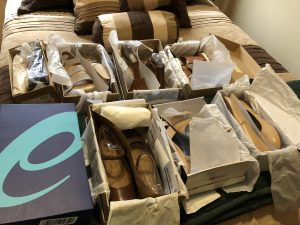
Heidi’s foot is still swollen so it’s tough to tell exactly, but she expects her shoe size to go up by about half a size due to the unfurling of her toes. You don’t want to crowd your newly straightened toes. Buy shoes that fit. While there is no special “mallet shoe” or “mallet sneaker” you must wear after surgery, it is important to wear comfortable, shoes with wide toe beds to prevent hammer toes or mallet toes from returning. “Save heels for special occasions,” Heidi recommends.



